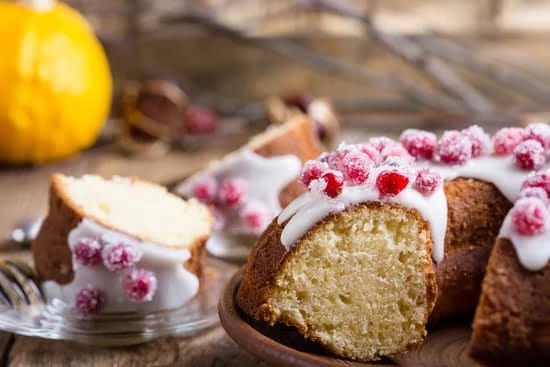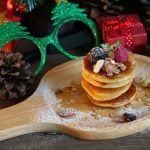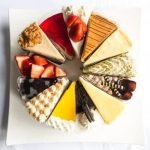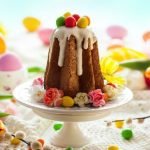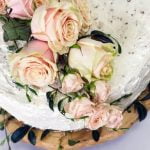Cake decorating has long been associated with the use of piping bags, but did you know that there are many creative cake decorating ideas that can be achieved without using one? In this article, we will explore alternative techniques and tools for cake decoration, allowing you to unleash your creativity and achieve stunning designs without the need for a traditional piping bag.
Piping bags have become popular in cake decorating due to their ability to create intricate designs and precise decorations. However, not everyone may have access to a piping bag or feel comfortable using one. That’s where these alternative techniques come in. By exploring different methods and tools, you can still achieve beautiful cake decorations that will impress your friends and family.
In the following sections, we will introduce essential tools for cake decorating without a piping bag, such as spatulas, knives, stencils, and even DIY piping bags made from common household items. We will provide step-by-step instructions on various techniques like finger painting, spatula and knife painting, and using stencils. Additionally, we will discuss unique ideas such as using fresh flowers or unconventional materials like chocolates or candies for decorations.
So if you’re ready to embark on a creative journey in cake decorating without a piping bag, keep reading. It’s time to discover the endless possibilities and embrace the artistry of cake decoration through these alternative techniques.
Essential Tools for Cake Decorating Without a Piping Bag
Introduction:
Cake decorating is a popular and creative way to elevate the presentation of any cake. Traditionally, decorators have relied on piping bags to create intricate designs and patterns on their cakes. However, not everyone may have access to a piping bag or be comfortable using one.
Fortunately, there are alternative tools that can be used to achieve stunning cake decorations without the need for a piping bag. In this section, we will explore some essential tools for cake decorating without a piping bag and highlight their versatility and accessibility.
Alternative Tools for Cake Decorating:
- Offset Spatula: An offset spatula is a versatile tool that can be used for both spreading frosting and creating beautiful designs on cakes. Its angled blade allows for smooth and precise strokes, making it perfect for creating swirls, waves, or delicate borders. Additionally, an offset spatula can also be used to gently push frosting into place or smooth out any imperfections.
- Palette Knife: A palette knife is another fantastic tool for cake decorating without a piping bag. This flat-bladed knife offers more control compared to an offset spatula, allowing decorators to create unique textures, blend colors seamlessly, and even produce artistic patterns like marbling or feathering. Its wide blade is suitable for covering larger areas of the cake with buttercream frosting or ganache.
- Paint Brushes: Don’t underestimate the power of paint brushes when it comes to cake decoration. These versatile tools can be used to apply edible food coloring directly onto the surface of the cake, allowing you to create fine lines, intricate details, or even watercolor-like effects. Different brush sizes can offer varied results, so make sure to have a variety on hand.
Choosing the Right Tools:
When choosing alternative tools for cake decorating without a piping bag, consider the desired effect you want to achieve and the specific technique you will use. For example, if you prefer delicate detailing or fine lines, opt for smaller paintbrushes or palette knives. On the other hand, larger spatulas and brushes are better suited for broader strokes and covering larger areas.
It’s also essential to consider the comfort and ease of use when selecting your tools. Experiment with a few different options to find ones that feel comfortable in your hand and allow for precise control while decorating.
By exploring these alternative tools, you can embrace the artistry of cake decorating without relying solely on a piping bag. Remember to practice and experiment with different techniques to develop your own unique style and create beautifully decorated cakes that will impress your friends and family.
Finger Painting Technique for Beautiful Cake Designs
Introduction:
Cake decorating is a popular art form that allows individuals to express their creativity and add a touch of beauty to any baked creation. While piping bags are commonly used for cake decorating, there are alternative techniques that can be just as stunning. One such technique is finger painting, which offers a unique way to create beautiful cake designs without the need for a traditional piping bag.
Step-by-Step Guide on Using Fingers:
Finger painting on cakes opens up a world of possibilities for creative designs. To start, make sure your hands are thoroughly clean and dry before beginning the process. Begin by applying a base coat or frosting color on the cake using a spatula or knife. This will serve as the background for your finger-painted design.
Next, dip your fingers into edible food coloring or gel paste in various shades. Start by lightly tapping or pressing your colored fingers onto the cake surface, creating small dots or specks for texture. You can experiment with different levels of pressure to achieve various effects.
To create more intricate designs, use different fingers to swipe, drag, or swirl the colors together. This technique works particularly well when creating gradients or ombre effects on the cake’s surface. Remember to rinse your fingers between color changes to prevent them from mixing unintentionally.
Examples of Finger-Painted Cake Designs:
Finger painting allows for endless creativity when it comes to cake decorating. Some popular finger-painted designs include abstract patterns, flowers, animals, and landscapes. For example, you can create vibrant flower petals by using different-colored fingertips to gently press and drag outward from a center point.
Additionally, finger painting can be combined with other techniques like stenciling or using edible markers for added detail and precision. The final result will showcase an organic and textured look that cannot be achieved through traditional piping methods alone.
The finger painting technique offers an exciting alternative to piping bags in cake decorating. It allows artists to truly connect with their creations and adds a personal touch to every design. With a little practice and experimentation, anyone can achieve stunning cake designs using this unique technique. So, let your fingers become the brushes and explore the beautiful world of finger-painted cake decorating.
Spatula and Knife Painting
Cake decorating without a piping bag doesn’t have to limit your creativity. In fact, it can provide an opportunity to explore new artistic techniques. One such technique is spatula and knife painting, which allows you to create stunning cake designs using these unconventional tools.
To achieve texture, blending colors, and creating artistic patterns with spatulas and knives, it is important to select the right tools for the job. A palette knife with a flexible yet sturdy blade is ideal for spreading icing smoothly on the cake surface and creating intricate designs. A small offset spatula can be used for fine details and precise work.
When approaching spatula and knife painting, remember to start with a crumb-coated cake. This will provide a smooth base for your design. Begin by applying an even layer of buttercream or ganache all over the cake using a palette knife. Once the cake is evenly coated, you can start exploring different techniques.
One technique is called “palette knife smearing.” Apply different colors of icing onto the cake surface in random patches. Then, use the palette knife to blend or smear the colors together in sweeping motions. This creates a beautiful marbled effect that adds depth and dimension to your design.
Another technique is “knife painting.” Use a small offset spatula or a flat-edged knife to apply strokes of icing onto the cake in various directions. You can experiment with different angles and pressure to create unique patterns and textures. For example, dragging the edge of the spatula lightly across the surface can create delicate lines, while pressing it more firmly can create bolder textures.
| Spatula and Knife Painting Examples |
|---|
 |
 |
The possibilities are endless with spatula and knife painting. This technique allows you to create unique, hand-painted designs that showcase your artistic flair. So, don’t be afraid to unleash your creativity and explore new horizons in cake decorating without a piping bag.
Stencil Magic
Stencils can be a game-changer when it comes to creating intricate and detailed cake designs without the need for a piping bag. Not only do they allow for precise and professional-looking decorations, but they also open up a world of possibilities in terms of design options. Here’s how you can use stencils to achieve stunning cake decorations:
- Choose the Right Stencil Design: Stencils come in a wide variety of designs, from traditional patterns to modern motifs. Consider the theme or occasion for your cake and select a stencil that complements it. Whether you’re decorating for a birthday, wedding, or any other special event, there is surely a stencil design that will suit your needs.
- Prepare Your Cake Surface: Before using the stencil, make sure your cake surface is smooth and free from any imperfections. You can achieve this by applying a thin layer of icing or ganache and allowing it to set before placing the stencil on top.
- Secure the Stencil in Place: Use small pieces of tape or non-toxic adhesive to secure the stencil firmly onto your cake’s surface. This will prevent any movement or slipping while you are applying the decoration.
- Apply Your Decoration: There are various ways to apply your decoration using stencils. You can use an offset spatula or scraper to spread icing over the stencil and then carefully lift it off, revealing the design underneath. Another method is using an airbrush with food-safe coloring to spray over the stencil for a more vibrant effect.
- Remove the Stencil: Once you have applied your decoration, gently lift off the stencil from one end to avoid smudging any parts of the design. Be patient during this step as rushing might ruin all your hard work.
- Add Finishing Touches: After removing the stencil, take some time to perfect any areas that may require touch-ups. You can use a small paintbrush or a toothpick to add details or fix any imperfections.
By using stencils, you can create intricate and professional-looking cake designs without the need for a piping bag. With a wide range of designs available on the market, you can easily find a stencil that suits your needs and adds that extra touch of elegance to your cakes. So why not give stencil magic a try and see how it transforms your cake decorating game?
DIY Piping Bags
When it comes to cake decorating, not having a piping bag doesn’t mean you have to miss out on creating beautiful designs. In fact, making your own piping bags using common household items can be a fun and creative alternative. Not only does this allow you to save money, but it also opens up a world of possibilities for unique and custom cake decorations.
To make your own DIY piping bags, all you need are some basic materials that you probably already have in your kitchen. One simple method involves using plastic sandwich bags or Ziplock bags. Just fill the bag with frosting or icing, twist the top to create pressure, and snip off a small corner of the bag. This makeshift piping bag can be used for writing messages, creating lines, or adding details to your cake.
Another option is to repurpose items like parchment paper or wax paper into disposable piping bags. Cut a square piece of paper and fold it into a triangle shape. Then roll it into a cone with one end twisted closed and the other end open for filling with frosting. The advantage of these DIY options is that they are easily customizable in terms of size and shape, allowing you to experiment with different patterns and designs on your cakes.
| DIY Piping Bag Materials | Alternative Options |
|---|---|
| Plastic sandwich bags or Ziplock bags | Parchment paper or wax paper |
| Scissors | Tape (if using parchment paper) |
By embracing the creativity and resourcefulness of making your own decorative tools, you can add a personal touch to your cake designs. Experiment with different materials and techniques to achieve unique textures, patterns, and effects. The possibilities are limitless when it comes to DIY piping bags, so don’t be afraid to unleash your inner artist and let your cakes become edible masterpieces.
Using Ziplock Bags for Convenient Cake Decorating
One popular and convenient alternative to traditional piping bags for cake decorating is using Ziplock bags. Ziplock bags are readily available in most households, making them a versatile tool that can be easily utilized for cake decoration. They offer convenience and flexibility, allowing decorators to achieve professional-looking results without the need for specialized equipment.
To use Ziplock bags for cake decorating, begin by selecting the appropriate size of bag based on the design you want to create. Smaller designs may require smaller bags, while larger designs may necessitate larger bags. Fill the bag with your desired frosting or icing, ensuring that it is tightly sealed to prevent any leakage.
Next, cut a small hole in one corner of the bag. The size of the hole will depend on the thickness of your frosting or icing and the desired outcome. For finer details, a smaller hole is preferable, while larger holes are suitable for broader strokes.
When using Ziplock bags for cake decorating, it’s essential to hold the bag correctly. Hold it at a 45-degree angle from the surface of the cake, applying steady pressure as you gently squeeze out the frosting or icing. Practice on a separate surface before applying it to your cake to get a feel for controlling the flow and consistency.
Ziplock bags offer convenience when it comes to cleaning up as well. Unlike traditional piping bags that need thorough cleaning after each use, Ziplock bags can simply be disposed of once you finish decorating your cake.
By utilizing Ziplock bags as an alternative to traditional piping bags, decorators can achieve professional-looking results with ease and convenience in their own home kitchen. Whether you’re creating delicate details or bold designs on your cakes, try experimenting with this technique for hassle-free and beautiful cake decorations.
The Beauty of Natural Elements
Decorating cakes with fresh flowers and fruits adds a touch of elegance and natural beauty to any dessert. It is a trend that has gained popularity in recent years, as more people appreciate the freshness and vibrancy that these natural elements bring to cake designs. Incorporating fresh flowers and fruits allows for endless possibilities in creating unique and visually stunning cakes.
When using fresh flowers for cake decoration, it’s important to choose blooms that are safe for consumption. Certain flowers are toxic and should never be used directly on cakes. Focus on using edible flowers such as violets, pansies, marigolds, or roses from trusted sources. Make sure they have been properly washed beforehand to remove any dirt or pesticides.
To incorporate fresh fruits into cake designs, consider selecting fruits that complement the flavors of the cake. Berries like strawberries, blueberries, or raspberries not only add a burst of color but also provide a delicious sweetness. Sliced citrus fruits such as oranges or lemons can add a refreshing tanginess to balance out richer cake flavors. Remember to wash all fruits thoroughly before using them.
Arranging fresh flowers and fruits on a cake requires some creativity. You can place them individually as accents, create floral bouquets on top of the cake, or even cascade them down the side for a dramatic effect. Play around with different combinations and arrangements until you find one that suits your style and desired aesthetic.
When placing the flowers or fruits onto the cake, use toothpicks or small skewers as supports to ensure they stay in place. Alternatively, place a thin layer of frosting where you want the flower or fruit to adhere before gently pressing it onto the frosting.
Overall, decorating cakes with fresh flowers and fruits allows for endless creativity and adds a touch of natural beauty to any occasion. Whether it’s a simple buttercream cake adorned with delicate flower petals or an elaborate tiered masterpiece featuring an array of colorful fruits, incorporating these natural elements will surely impress both the eyes and taste buds. So, don’t be afraid to experiment and create your own stunning cake designs using the beauty of nature.
Alternative Materials for Cake Decorating
Cake decorating doesn’t have to be limited to traditional piping bags and tips. In fact, there are countless unconventional materials that can be used to create unique and eye-catching cake decorations. By thinking outside the box and embracing creativity, you can take your cake decorating skills to a whole new level. Here are some unconventional ideas to inspire you:
- Chocolates: Chocolate is not only delicious but also a great material for cake decorations. You can melt chocolate and pour it onto wax paper or silicone molds to create intricate designs. Once hardened, these chocolate decorations can be placed on top of cakes, giving them an elegant touch. Consider using different types of chocolate such as dark, white, or even colored chocolate for added visual appeal.
- Candies: Colorful candies can add a fun and playful element to your cake decorations. Think lollipops, gummy bears, or even candy sprinkles. You can use them to create borders around the edges of the cake or arrange them in patterns on top of the frosting. Get creative with different shapes and sizes of candies for a truly unique design.
- Fabric: Yes, you read that right – fabric. If you’re looking for a non-edible yet stunning decoration, fabric can be the way to go. Choose lightweight fabrics such as organza or lace and cut them into decorative shapes like flowers or butterflies. These fabric decorations can be pinned onto the sides or arranged on top of the cake for an ethereal and whimsical look.
- Edible flowers: If you want to add a touch of elegance and natural beauty to your cakes, consider using edible flowers as decorations. Flowers like pansies, violets, or marigolds are safe for consumption and make stunning additions to any cake design. Make sure the flowers have been grown without pesticides before using them so they are safe to eat.
These unconventional materials open up a world of possibilities for your cake decorating endeavors. Experiment with different combinations and techniques to create unique and visually appealing designs. Remember, the sky’s the limit when it comes to cake decorating, so let your imagination run wild.
Conclusion
In conclusion, cake decorating without a piping bag opens up a world of endless creativity and artistry. Throughout this blog post, we have explored various techniques and ideas that can be used to create stunning cake designs without relying on traditional piping bags. From finger painting to spatula and knife painting, stencil magic to DIY piping bags, ziplock bags to natural elements like fresh flowers and fruits, and even unconventional materials like chocolates or fabric – the possibilities are truly limitless.
By embracing these alternative methods, you have the opportunity to bring your own unique touch to every cake design you create. Experiment with different tools and techniques, allowing your imagination to run wild. The beauty of cake decorating without a piping bag lies in its versatility and accessibility. You don’t need specialized equipment or expertise; all you need is a willingness to explore and try new things.
So go ahead and embark on this creative journey. Don’t be afraid to think outside the box and unleash your inner artist. Whether it’s using your fingers, spatulas, stencils, or even repurposing household items for DIY piping bags – let your imagination be your guide. With each new technique you discover, you’ll not only enhance your cake decorating skills but also experience the joy of creating something truly unique.
Frequently Asked Questions
How do you put icing on a cake without piping?
When it comes to putting icing on a cake without using a piping bag, there are a few alternative methods you can try. One option is to use an offset spatula or a butter knife to spread the icing evenly over the cake’s surface. Start by applying a thin layer and gradually build up thickness as desired.
Another technique is called the “smoothing” method, where you pour warm icing onto the cake, gently tilt it to spread the icing smoothly across the top and sides, and then use a flat spatula or bench scraper to create a smooth finish. Remember to be patient and take your time while spreading the icing to ensure an even coating.
How to decorate a cake with buttercream without a piping bag?
Decorating a cake with buttercream without using a piping bag can still result in beautiful designs. One way is to use an offset spatula or a butter knife to spread the buttercream over the entire cake’s surface evenly. You can create texture by simply swirling the spatula or knife in gentle circular motions.
Another option is to use various kitchen tools such as forks, spoons, or even toothpicks to create patterns in the buttercream by dragging them through its surface. You can experiment with different utensils and techniques until you achieve your desired decorative effect.
What is the easiest way to decorate a cake?
The easiest way to decorate a cake depends on personal preference and skill level, but there are some straightforward techniques that work well for beginners. One of these methods is using powdered sugar or cocoa powder sifted through stencils onto the cake’s surface for simple yet visually appealing designs. Another easy approach is decorating with fresh fruit or edible flowers arranged on top of the cake or along its edges, which adds color and freshness effortlessly.
Additionally, using ready-made decorative items such as colorful sprinkles, fondant shapes, or edible glitter can quickly transform a plain cake into something more eye-catching with minimal effort required. Ultimately, choosing decoration techniques that align with your skill level and desired aesthetic can make the process of cake decoration easier and more enjoyable.

Welcome to our cake decorating blog! My name is Destiny Flores, and I am the proud owner of a cake decorating business named Cake Karma. Our mission is to provide delicious, beautiful cakes for all occasions. We specialize in creating custom cakes that are tailored specifically to each customer’s individual needs and tastes.

